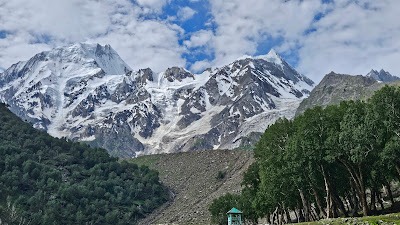
Image Source: Amandeep singh Parihar
About Brammah massif
Tucked away in the eastern reaches of Jammu & Kashmir, the Brammah massif comprises four main peaks aligned from west to east. All of this is nestled deep inside the Kishtwar National Park in a protected reserve covering over 2,100 square kilometres.
The peaks rise abruptly from the surrounding terrain, giving them a daunting prominence.
Each with its own story to tell, the beautiful Kishtwar Himalayas is not a collection of summits but a sentinel of untamed beauty, geological grandeur, and historical mountaineering feats.
Brammah I (6,416 m): One of the most iconic peaks came into the limelight when British legends Chris Bonington and Nick Estcourt made its first ascent in 1973. From photos and satellite imagery, it appears as a sharp pyramid that dominates the skyline, especially when viewed from the Kishtwar valley. The crown jewel is not the tallest but one of the most beautiful peaks due to its shape.
Flat Top, or Brammah III (6,103 m)—First climbed in 1980, the peak is aptly named due to a unique summit plateau. It’s not technically extreme, but the remoteness adds to
Brammah II (6,485 m) Hiding in the shadows of a more photogenic neighbour, Brammah II, it is the highest massif among all. It was first summited in 1975.
Arjuna (6,230 m) The easternmost of the four, this peak’s first ascent happened in 1983. The name of the peak hints at the mythological undercurrent that flows subtly through the region.
Hudh Mata Temple
Hudh Mata Temple adds a layer of cultural ambiance to the region. Situated in nearby Dachhan, the temple paints a picture of life that remains intertwined with the mountains, as it has for centuries.
